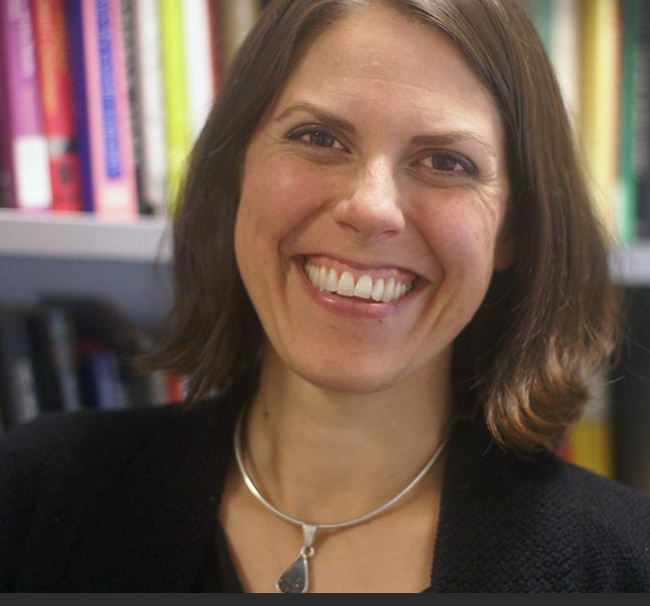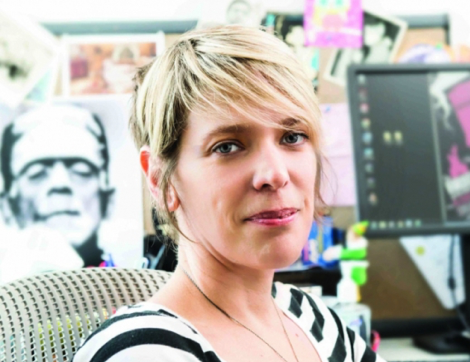When I was ten, my grandmother worried about my future.
“I’m not sure many people are journalists anymore, love,” she would say. “There are not many jobs left in writing—the robots are probably doing it all. Maybe choose something else.”
This notion concerned me at ten, but now, at twenty, doubly so—she was disturbingly on the nose about the robots, too.
Artificial intelligence technologies like ChatGPT (the acronym standing for "generative pre-trained transformer") have seeped into the general consciousness of students and instructors worldwide. Generative AI is comprised of algorithms utilized to create content: from essays and audio stories to simulations and coding, bots can engineer art and dish out answers to almost all questions. So, unless you’re part of the offline population, you’ve heard whisperings of a magical technology that can "do everything for you." But what does that mean? And how does this "fix-all" platform influence writing instruction at the University of Pittsburgh?
Associate Professor Annette Vee, Pitt English director of Composition, is interested in answering these questions, as her specialization lies at the intersection of computation and writing. Having been in the automated writing space for years, she’s been leading conversations about the influence of AI on writing instruction since far before the rollout of ChatGPT. Her book, Coding Literacy: How Computer Programming Is Changing Writing (MIT Press, 2017), considers how people write for computers. Now, she explores how computers write for people.

The AI Rollout: Breakneck Speed
Generative AI for writing “has made huge leaps over the past five years,” Vee says. “But the introduction of ChatGPT in November of 2022 was a watershed moment—regular people could operate the interface using natural language rather than programming.” So when research developer OpenAI released this chatbot to the public for testing, it spread like wildfire. “It’s been very, very fast,” Vee says.
In December and April of 2022, Vee shared a survey with students in English Composition courses, assessing their knowledge about platforms like ChatGPT. Student knowledge was extremely limited in the winter, but come April, most students knew about this AI technology.
With instructors creating their syllabi in December and January, the course of correction has been after the fact. “For the most part, professors didn't have policies put in proactively about it,” Vee says. “Much of this work is retroactively responding to students' integration of these technologies in their writing processes.”
Pitt’s Swanson School of Engineering has just approved new academic integrity codes for artificial intelligence legislation. The way the regulations are written has always implied that there are penalties passing off others’ writing as your own, but this is the first time in history that said “other” is not human.
Student Use of AI
So, how are students integrating ChatGPT into their schooling experience? The server is utilized most in a basic question-and-answer format—this spans math equations and history prompts, not limited to any subject. The tool’s use is further seen in projects, discussion board posts, and essay writing.
“Some students are using these systems in ways that are probably not supporting their learning or the learning objectives of the class,” Vee says. “It’s hard because some things are in the space of academic integrity violations.”
Teaching Professor Dana Och, director of undergraduate studies for the Film and Media Studies program, employs what she calls “scaffolding” to combat harmful AI use, layering course concepts throughout the semester and ensuring that student work remains their own. “AI is not good at thinking across assignments,” Och shares.

But not all students are utilizing ChatGPT in nefarious ways. For example, in Och’s film classes, some students have used AI to “alter their voices for genre-shifted trailers,” she notes. “This is an exciting way to include AI as a tool in student work.” An assignment such as this would call for creating film clips that change the tone of, say, a horror film, to fit that of a romantic comedy. In this case, AI-driven work proves itself valuable to the creative process.
Media and Professional Communications major Emma Desso says that she only utilizes ChatGPT if told by professors to explore the software. “I believe all students fear the potential for automatic detection,” Desso continues, “but most of us don’t use it out of integrity.”
“It is heartening that, for the most part, students understand this,” Vee responds.
To AI or Not to AI: Faculty Autonomy
Vee and I discussed what outlawing AI could look like for students. Do University members forgo auto-complete suggestions in emails or ignore Grammarly edits? Including these tools that have become so commonplace in communication, there is much more AI in daily life than we realize. Yet, do the Writing and Composition curricula need to shift to accommodate said onslaught of artificial tech? Where can we best strike a balanced relationship where AI meets writing instruction?
The answer: it depends.
“I think these things are slowly creeping into the ways that we write,” Vee admits.
Nevertheless, the future of composition has arrived and cannot be ignored. “It's important for instructors to consider how to teach students to work with this kind of AI writing.”
Luckily, Pitt has a strong commitment to faculty autonomy, meaning it is up to the instructors to decide how to proceed. As Vee says, “Faculty can kind of make their own call about a lot of things, which I think ultimately benefits the students,” which allows for experimentation with this type of tech. “If we came down with a no-AI policy,” she says, “this suspiciously orients the teacher-student relationship.” Thus, more conversations about better supporting students in whether or how they engage with ChatGPT makes for better pedagogy.
Dana Och discussed AI early on in her spring-term classes. “I addressed that I do not use AI grading for student assignments,” she says. “So I ask that students show me the same respect.”
And then there is the realm of creative writing. Jeff Oaks, teaching professor and director of undergraduate studies for the Writing program, is choosing not to talk about AI in his classroom. “There's already so much to cover,” Oaks shares, “I just don't want to give ChatGPT more credence than it needs.”
In the end, there is no ironfisted ruling amongst writing instructors at Pitt. Rather, they are working on a case-by-case basis, open to the possibilities of ChatGPT but not allowing it to change their curriculum entirely.
There Will Still Be Writers
My childhood self still worries about the future. I reassure her that there will still be writers, that—though some works now may be created with the assistance of a bot—the art of writing will survive. Vee notes, “There's not, I don't think, a strong desire to hear stories about human experiences written by AI, which doesn't know the human experience.”
Jeff Oaks says, “AI writes terrible poetry and has no real human vulnerability. It can be clever sometimes if the human gives it clever things to deal with, but it can't generate signs of real feelings in language.”
“AI is not creative or inventive,” Oaks continues. “It can't deal with specifics or nuances or tell jokes very well. It can't work with what's in the present, only in what's been written in the past. It's fairly easy to tell it from real, engaged writing.”

Everything Will be A(I)-Okay
Pitt’s English department continues to reflect on the AI question and navigate this hyper-technological space. The intersection between writing instruction and ChatGPT is a nuanced one in which instructors are “conscientious, thoughtful, student-centered in the ways that [they’re] trying to figure out,” Vee says. Students and professors alike will continue to learn together throughout this unprecedented time.
“It doesn't mean that we're going to come to the same conclusions about ChatGPT,” Vee concludes. “There’s enough space here in the department for that. We make space for that.”
—Jilly Rowan
Jilly Rowan is a rising senior majoring in Media & Professional Communications and Writing.
